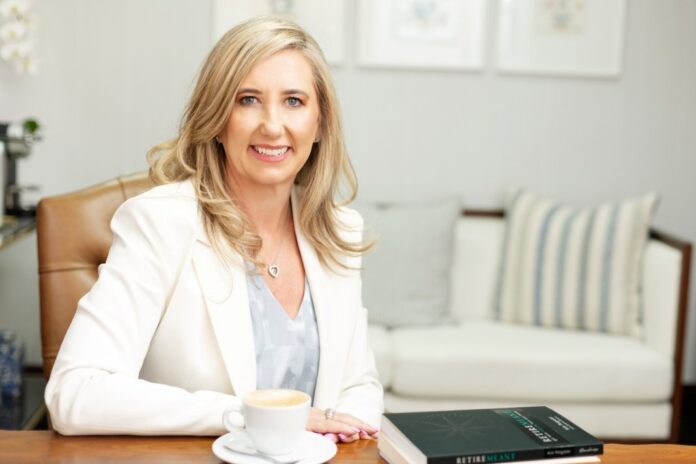In midlife, work, purpose, money and meaning begin to intersect. Clients start asking how they can live and work differently. They don’t simply want to grow assets but align their financial plans with a renewed sense of what matters most. Meaning and significance often trump making more money.
For planners, this presents a significant professional opportunity. It calls for both our financial expertise and our ability to guide clients through these transitions with empathy, objectivity, structure and a long-term perspective.
The risk of impulsive change
Some recalibrations start with a strong desire to shift direction entirely, often to leave formal employment, relocate or pursue new dreams.
James, a client in his early 50s, was at this exact crossroads. After two decades in corporate leadership, he was ready for independence. His goal wasn’t early retirement but to consult on his own terms: controlling his time, extending his working life and finding renewed purpose. His motivation was valid, but the financial risks were real. James worried about leaving behind a secure salary, annual bonuses and share allocations. Without proper planning, his income could become unpredictable, expenses easily underestimated and retirement assets vulnerable if not properly protected.
This is where the planner’s role is crucial. Our work is not to discourage change but to bring objectivity and structure to ensure change happens safely. We explored what was driving his desire for change – his why – and tested his assumptions. Was he clear on the value he offered? Did he understand the realities of consulting? Could we design a phased approach that protected his long-term capital while allowing him to experiment?
We modelled multiple scenarios, ran income projections and explored portfolio career options – consulting combined with other income streams. With his core capital ringfenced, James began reducing corporate hours while gradually building his business. The shift was meaningful and financially sustainable.
Planning conversations to explore
-
- What is driving your desire for change right now?
- How can we test new income sources conservatively before fully exiting?
- What capital must remain fully protected to secure your long-term future?
- Can your skills translate into multiple income streams rather than a single new role?
- Who can support you as mentor or coach during this transition?
The midlife catch-up chapter
Not all recalibrations involve starting over. Many clients arrive at this phase after prioritising children’s education and family needs for years, only now shifting their focus to personal and financial wellbeing.
Olivia and Liam had dedicated much of their adult lives to their children’s schooling and university education. With one child now independent and another close to finishing studies, they finally faced the question: have we left it too late? Their story is familiar: responsible parents who made intentional, value-driven choices but now face a compressed timeline to build retirement capital. Anxiety and guilt are common emotions in this space.
Our role is to reframe. Midlife is not an end; it’s often the beginning of the most productive earning years. For many, this is a 20-year window where income peaks and major expenses fall away. With discipline, clear goals and a structured plan, there is still significant opportunity.
We first worked together to build a life plan, visualising what they wanted this chapter to look like. From there, the financial plan followed, balancing savings with lifestyle enjoyment. We also explored releasing capital: renting out space, downscaling in future years and redirecting freed-up cash into investment.
Planning considerations
-
- Reframe fear and guilt into forward-focused goals.
- Ask: what does your ideal life look like in the next chapter – and how do we build towards it?
- Can experience and wisdom translate into additional earning potential?
- Are there opportunities to build a portfolio career?
- Balance future security with lifestyle enjoyment in the present.
- Explore unlocking capital for investment purposes.
Navigating unplanned transitions
Some recalibrations arrive unexpectedly – divorce, retrenchment, business failure, death of a spouse – often when clients assume their plans are already on track. Leonie’s story is one I’ve seen repeatedly. At 55, her husband filed for divorce, forcing a complete reset emotionally and financially. The shared plan dissolved overnight, and every decision carried new weight.
Emotions run high in these moments. Clients feel vulnerable and overwhelmed. While those emotions are real and need to be acknowledged, they’re not a solid foundation for long-term financial decisions. As planners, this is where our work becomes about far more than numbers on a spreadsheet. We create space where clients feel safe to express what they’re going through while objectively guiding them back to facts, choices and a plan.
With Leonie, we worked through what her new future might look like. We reviewed her asset base, income needs and how her investments could support her going forward. We explored what changes she may need to make – not to restrict her, but to protect long-term security – while ensuring financial flexibility to adjust as life unfolded. We also focused on rebuilding income, reframing career options and using her skills and network to explore consulting, contract work or reskilling. At a time when everything felt as though it was starting over, the truth was very different: she was building on decades of experience.
Planning conversations to explore
-
- Allow space for emotions, but separate feelings from decisions.
- Help clients focus on what they can control right now.
- Explore ways to rebuild financial stability – earning, downsizing or adjusting spending.
- What skills or experience might open new income streams?
- What lifestyle adjustments offer flexibility without sacrificing wellbeing?
- What support network can you draw on as you rebuild?
From success to significance
Midlife often brings a desire to live a more wholehearted life and engage with the world from a place of worthiness. Bob Buford, in Halftime: Moving from Success to Significance, describes the shift from career accumulation towards purpose and contribution.
Often, clients feel drawn to do work that matters more deeply but struggle with uncertainty: how do I make this shift without jeopardising my financial wellbeing? The planner’s role is to give these dreams structure, ensuring that purpose-driven work complements – rather than compromises – long-term security.
In these conversations, I often encourage clients to reflect on what they want to carry forward, what they wish to leave behind and what’s missing. With proper planning, significance does not require financial sacrifice.
Merging life planning and financial planning
Across all these scenarios, one truth sits at the centre: you cannot build a financial plan until you know what the money is for.
Our work starts by helping clients articulate values, purpose, identity, contribution and balance. From there, the financial plan supports the life plan, guiding savings, investments and decisions with clarity and confidence. This is not separate work from financial planning; it is financial planning done properly.
The planner’s evolving role
As more clients face these transitions, our role continues to expand. Yes, we remain professional planners – managing risk, modelling portfolios, protecting wealth – but we are also objective partners through some of life’s most significant transitions. We provide space for clients to explore change safely, separate emotions from decisions and provide the structure that allows clients to pursue meaning, knowing their financial plan fully supports the life they want to build.














